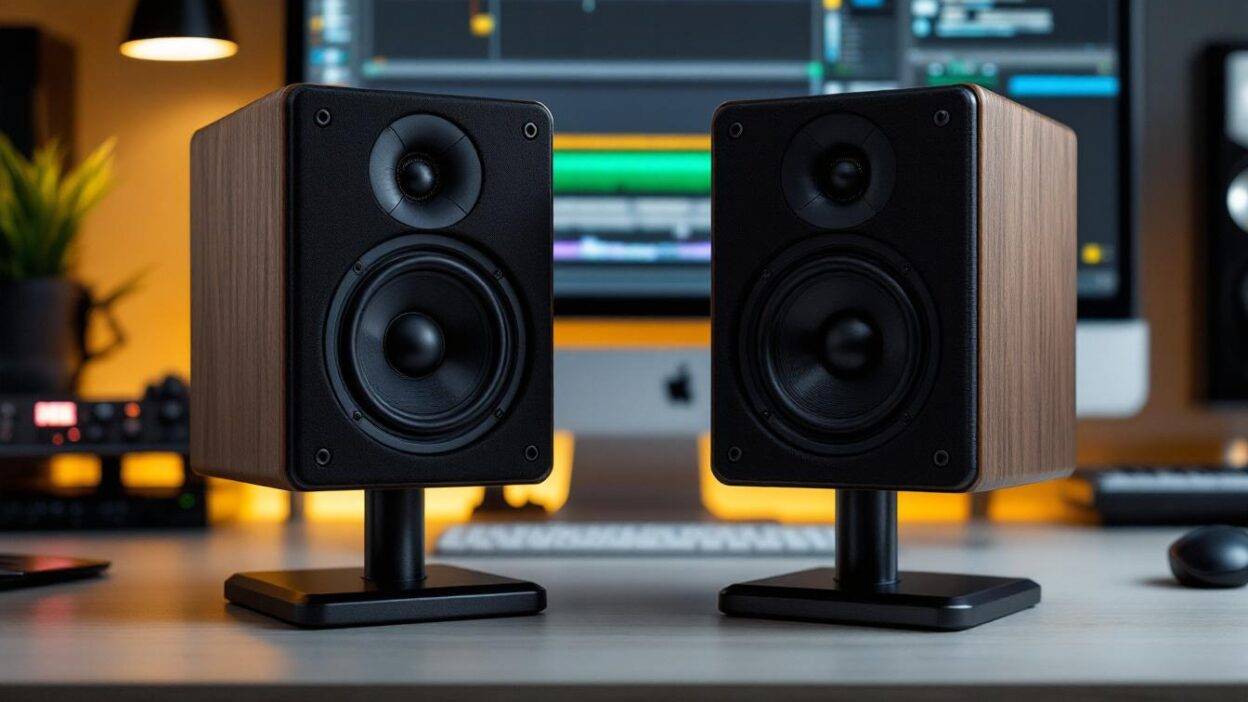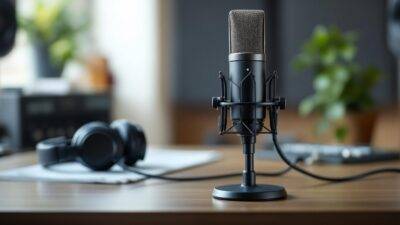At Chordx, we understand the critical role of monitor speakers in music production. These specialized tools are essential for accurately hearing your mixes and making informed decisions during the creative process.
Choosing the right monitor speakers can significantly impact the quality of your music. In this guide, we’ll explore the key factors to consider when selecting monitor speakers for music production, helping you make an informed decision for your studio setup.
What Makes Studio Monitors Special?
Flat Frequency Response
Studio monitors form the foundation of professional music production. Unlike consumer speakers, these specialized tools provide a flat frequency response, making them more accurate for reproducing sound. This accuracy allows you to make informed mixing and mastering decisions.
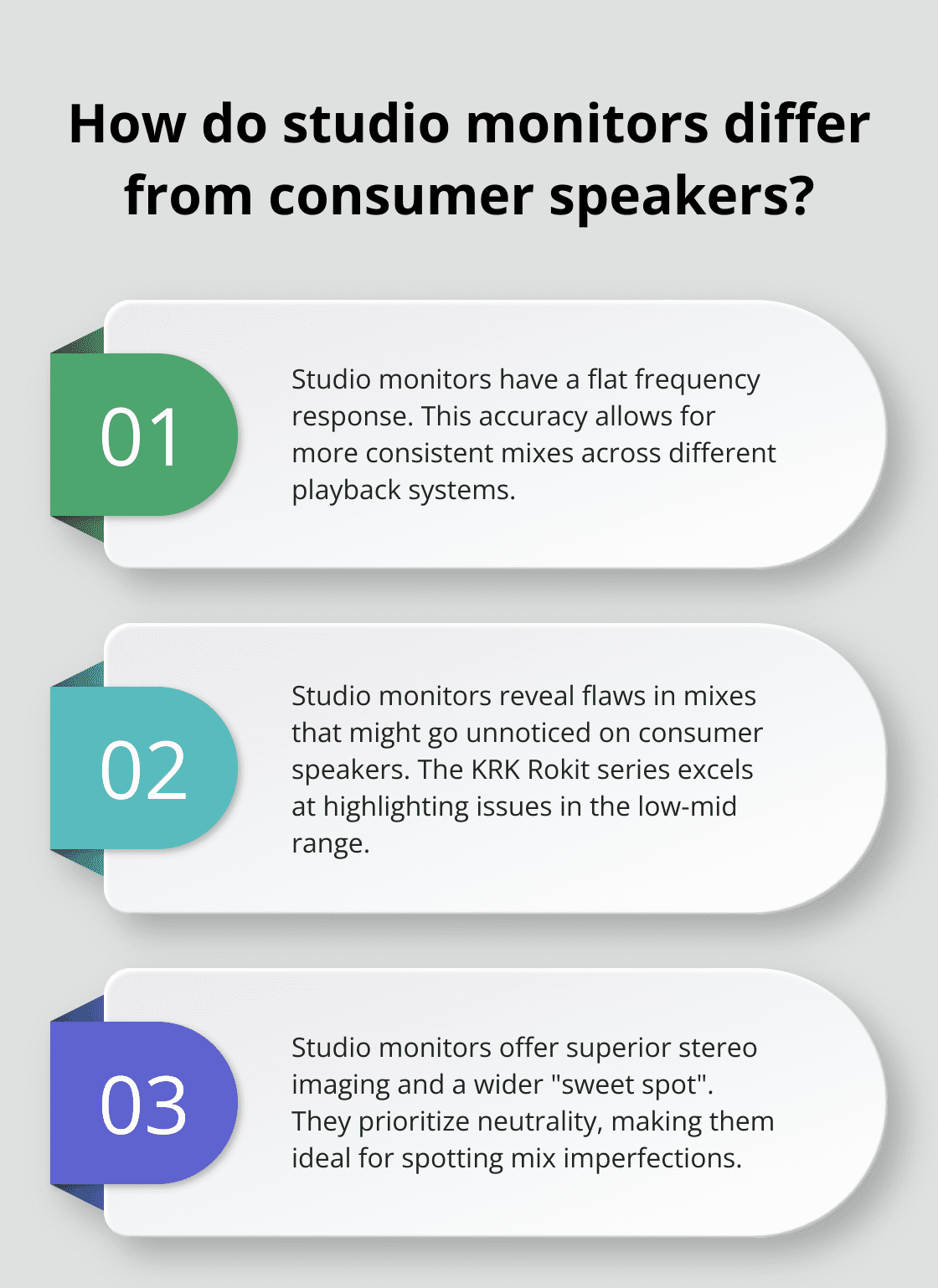
The Audio Engineering Society found that monitors with a flat frequency response produce more consistent mixes across different playback systems. Your music will sound better on a wider range of devices (from car stereos to high-end home audio systems).
Revealing Flaws
Studio monitors don’t hide imperfections. They expose flaws in your mix that might go unnoticed on consumer speakers. This can surprise you at first, but it’s necessary for creating polished, professional-sounding tracks.
The KRK Rokit series, for example, excels at highlighting issues in the low-mid range (a problematic area for many mixes). This allows you to address these issues before they become apparent on other systems.
Precise Stereo Imaging
Professional monitors offer superior stereo imaging, creating an accurate soundstage that allows you to place elements precisely in your mix. The “sweet spot” – the optimal listening position – is typically wider in studio monitors, giving you more flexibility in your workspace.
Studio monitors prioritize neutrality, making them ideal for spotting mix imperfections, while regular speakers enhance frequencies, masking potential issues.
Power Handling and Distortion Control
Studio monitors handle high volumes without distortion. This maintains clarity during loud passages and ensures that what you hear accurately represents your mix.
The Adam Audio A7X (a popular choice among professionals) handles peak levels of 114 dB without distortion, allowing for accurate monitoring even at high volumes.
Choosing the Right Monitors
When selecting studio monitors, consider your room size, budget, and the genres you work with most frequently. The best monitors work well in your specific environment and help you create mixes that translate well to other systems.
Now that we understand what makes studio monitors special, let’s explore the different types available to help you find the perfect fit for your production needs.
Types of Studio Monitors Explained
Near-field Monitors
Near-field monitors dominate home and project studios. Designers create these for close-range listening (typically within 3-5 feet). This proximity reduces the impact of room acoustics, making them ideal for smaller, untreated spaces.
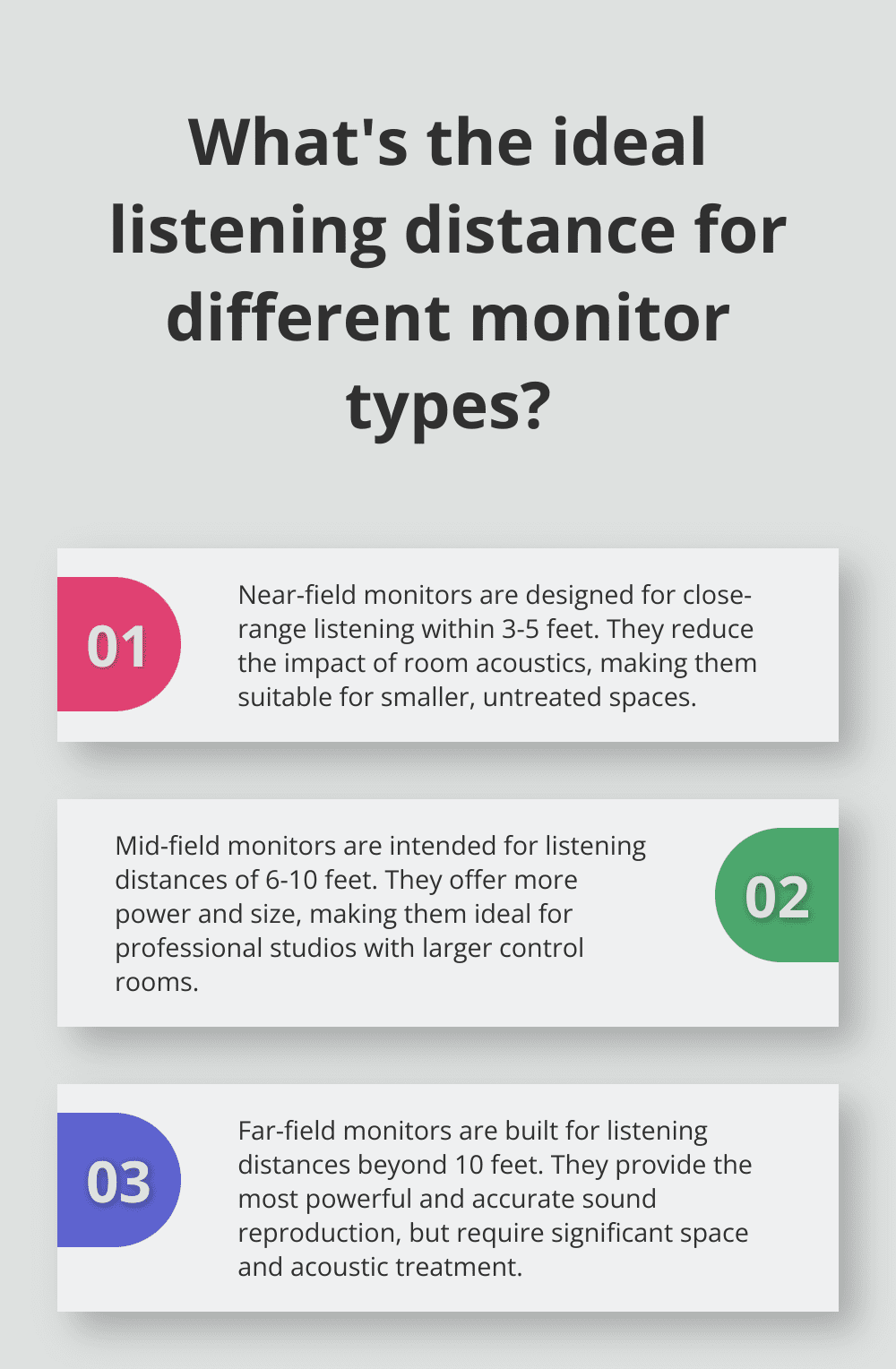
The Yamaha HS5 (a popular near-field option) offers a frequency response of 54Hz to 30kHz, suitable for most home studio applications. These monitors excel at revealing mix details and suit bedroom producers or those starting out.
Mid-field Monitors
Mid-field monitors pack more power and size, designed for listening distances of 6-10 feet. Professional studios with larger control rooms often feature these monitors.
The Adam Audio S3V (a mid-field monitor) boasts a frequency range of 32Hz to 50kHz, providing extended low-end response. This makes them excellent for genres requiring accurate bass reproduction (like EDM or hip-hop).
Far-field Monitors
Far-field monitors represent the largest type, typically built into the walls of high-end studios. Engineers design these for listening distances beyond 10 feet, offering the most powerful and accurate sound reproduction.
The Genelec 1236A (a far-field monitor) can produce an impressive 130 dB SPL at 1 meter. However, these monitors require significant space and acoustic treatment, making them impractical for most home studios.
Active vs. Passive Monitors
Active monitors include built-in amplifiers, while passive monitors require external amplification. Active monitors dominate the market due to their convenience and optimized performance.
The KRK Rokit 5 G4 (an active monitor) includes a 55W amplifier for its woofer and a 20W amplifier for its tweeter. This bi-amped design allows for more precise control over each driver, resulting in clearer sound.
Passive monitors, like the Avantone Pro CLA-10, appear less frequently but offer flexibility in amplifier choice. Some professionals prefer these, as they can use specific external amplifiers for their unique sound characteristics.
Your room size, budget, and production needs should guide your monitor choice. Near-field monitors often suit home studios best, while larger setups may benefit from mid-field options. The most expensive option doesn’t always fit your specific situation best.
Now that we’ve explored the different types of studio monitors, let’s examine some top choices for various budgets in the next section.
How to Choose the Perfect Monitor Speakers
Assess Your Space and Budget
Selecting the right monitor speakers starts with a realistic evaluation of your studio space and budget. Measure your room dimensions and consider your typical listening distance. For small home studios, near-field monitors often provide the best results. If you have a larger space, mid-field monitors might offer superior performance. Your budget will also play a crucial role in your decision. While high-end monitors can provide exceptional sound quality, many affordable options deliver excellent performance for their price point.
Prioritize Sound Quality and Accuracy
The primary goal of studio monitors is to reproduce sound accurately. Look for monitors with a flat frequency response, which will help you make more informed mixing decisions. Pay attention to the frequency range, especially if you work with bass-heavy genres. The Yamaha HS8, for example, offers a frequency response of 38Hz to 30kHz, which provides excellent low-end clarity for most home studio applications.
Consider Room Acoustics and Treatment
Even the best monitors can’t compensate for poor room acoustics. Before investing in expensive speakers, allocate some of your budget to basic acoustic treatment. Start with bass traps in corners and absorption panels at first reflection points. The GIK Acoustics 242 Acoustic Panel is an excellent choice for acoustically treating early reflection points, flutter echo, or general decay in a room. These 3.625″ thick panels are ideal for 2-channel listening rooms, recording studios, restaurants, hotel lobbies, conference rooms, home theaters, and sanctuaries. Remember, a well-treated room with mid-range monitors will often outperform an untreated room with high-end speakers.
Test Before You Buy
Whenever possible, audition monitors in your own space. Many retailers offer trial periods or money-back guarantees. Take advantage of these offers to test monitors in your specific acoustic environment. Listen to a variety of music you’re familiar with, focusing on clarity, stereo imaging, and how well you can distinguish individual elements in complex mixes.
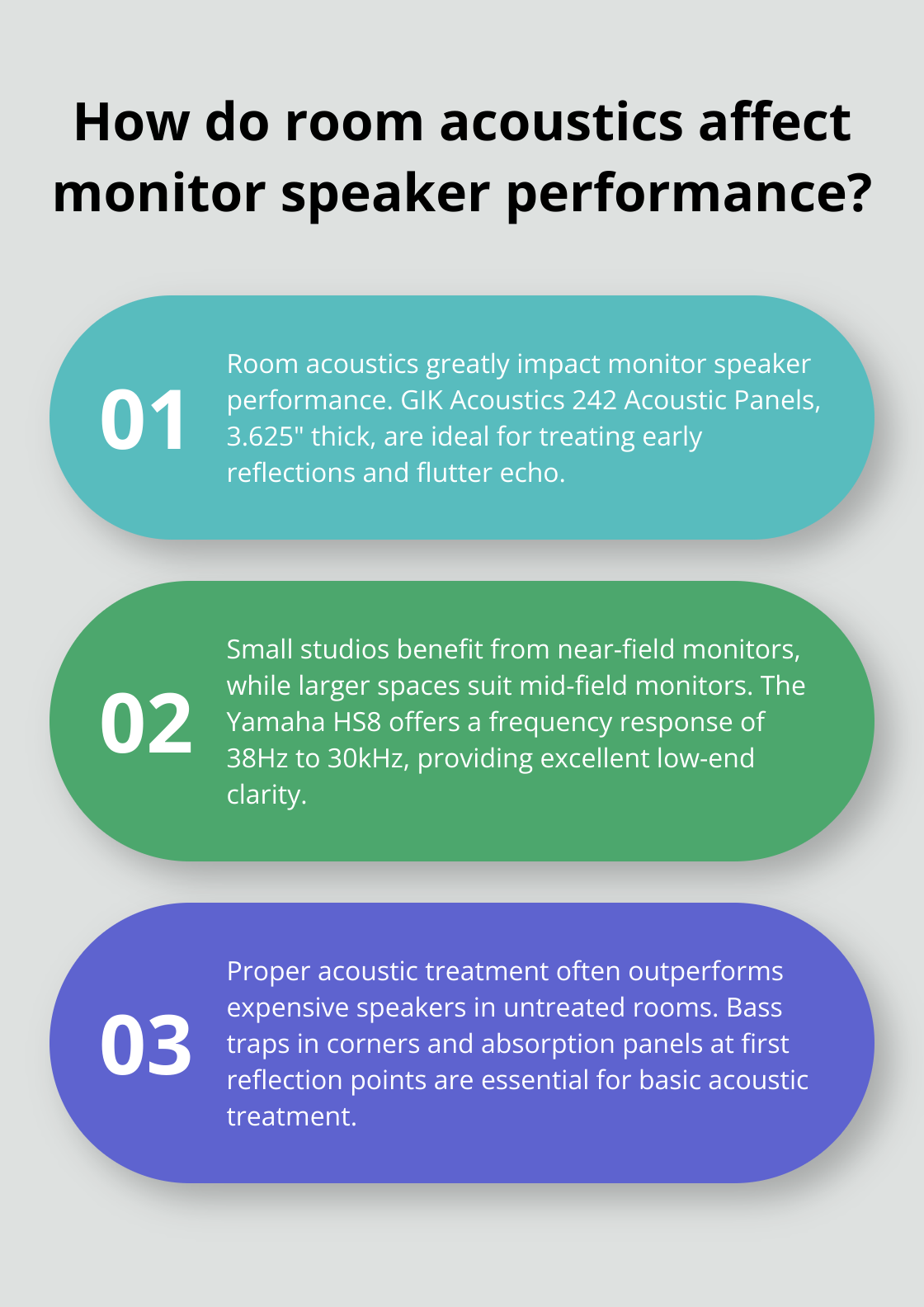
At james, we understand the importance of making informed decisions about your studio equipment. Our comprehensive resources can help you navigate the complexities of choosing the right monitor speakers for your unique needs. Whether you’re a beginner or a seasoned professional, investing in quality monitors will significantly improve your music production process and results.
Final Thoughts
Selecting the right monitor speakers for music production requires careful consideration of your specific needs, room acoustics, and budget. High-end options offer exceptional performance, but many affordable monitors provide excellent value, especially when paired with proper room treatment. Your personal preferences play a vital role in the selection process, so trust your ears and prioritize accuracy over a pleasing but colored sound.
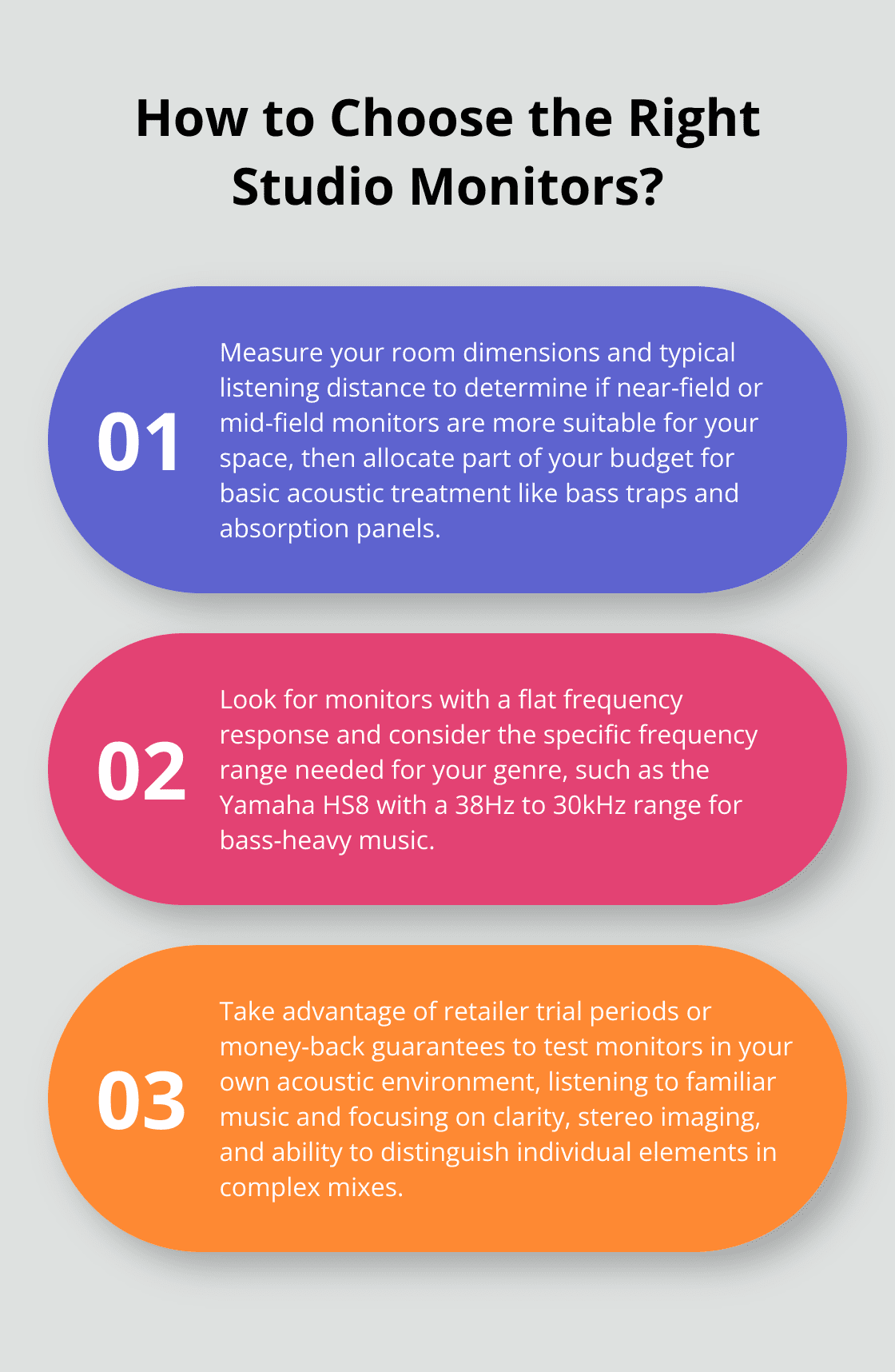
Room acoustics significantly impact monitor performance. Even expensive monitors won’t perform optimally in an untreated space, so invest in basic acoustic treatment to improve your listening environment. Quality monitor speakers become invaluable tools in your creative process, helping you make informed mixing decisions and produce professional-sounding tracks.
At james, we encourage you to invest in quality monitor speakers for your music production setup. Your monitors serve as the lens through which you view your music – choose wisely, and they’ll benefit your work for years to come. For more in-depth resources on music production, including expert insights on equipment choices and practical tips, visit our comprehensive hub at james.
